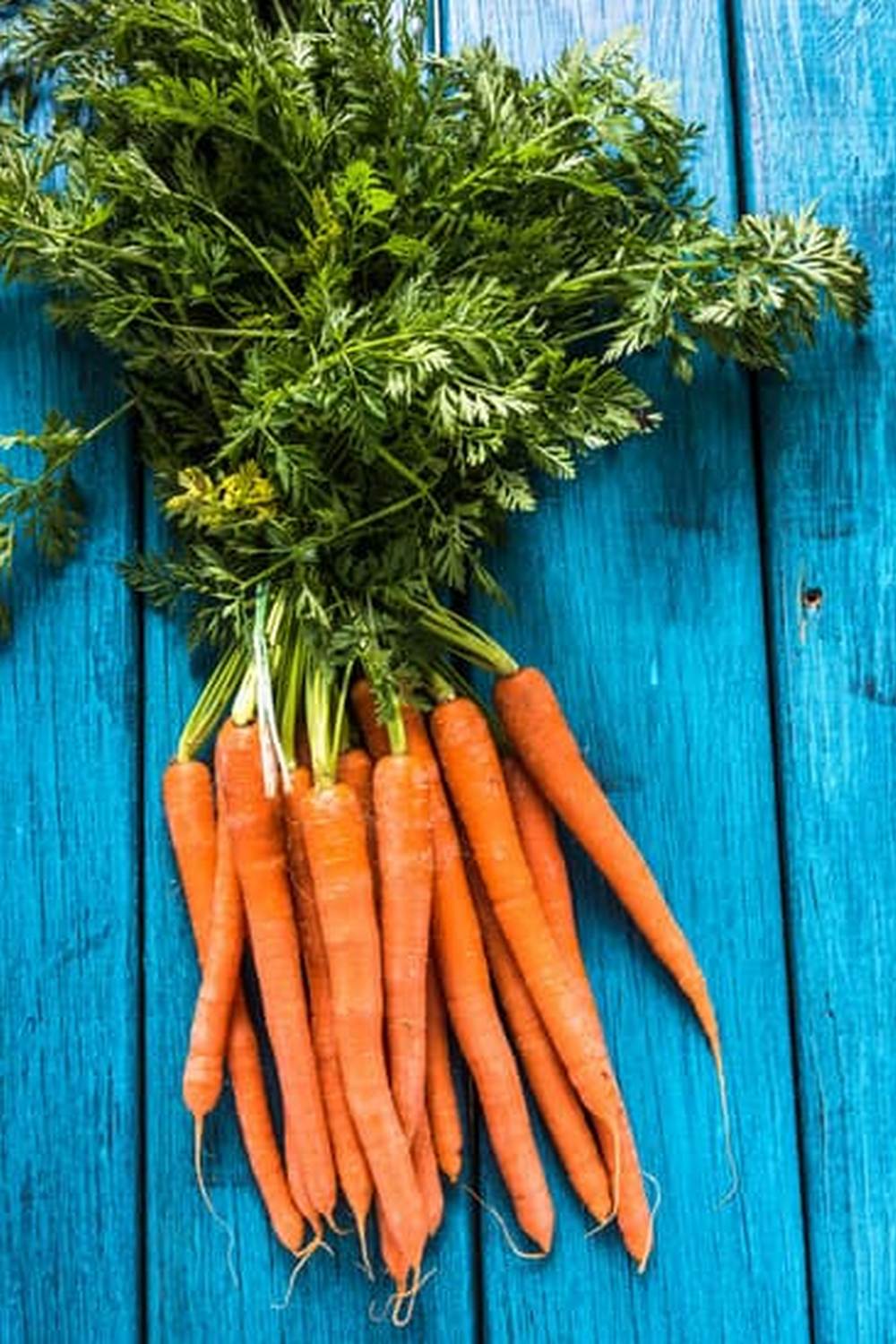When it comes to creating a successful and thriving vegetable garden in the southern region, companion flowers play a crucial role in not only adding beauty but also in enhancing the overall health and productivity of the garden. These companion flowers serve as more than just decorative elements; they provide essential benefits such as pest control, pollination, and soil improvement for the surrounding vegetable plants.
In this article, we will explore the significance of companion flowers in southern vegetable gardens and how they contribute to creating a harmonious and productive growing environment. We will also discuss the factors to consider when choosing the right companion flowers and highlight some of the best options for southern vegetable gardens, including marigolds, sunflowers, nasturtiums, zinnias, and lavender.
By understanding the importance of companion flowers and learning how to incorporate them effectively into your southern vegetable garden, you can not only create a beautiful outdoor space but also increase the yield and health of your edible plants. Let’s delve deeper into this fascinating topic to discover the benefits of companion flowers for southern vegetable gardens.
Choosing the Right Companion Flowers
When choosing the right companion flowers for your southern vegetable garden, there are several factors to consider to ensure a successful and harmonious relationship between the plants. Here are some key factors to keep in mind:
1. Pest control: Select companion flowers that can help repel pests that may damage your vegetable plants. Look for flowers with strong scents or natural insect-repelling properties.
2. Pollination: Choose flowers that attract pollinators such as bees and butterflies, as they can help increase the yield of your vegetable crops through better pollination.
3. Space and height: Consider the space and height requirements of both the vegetable plants and companion flowers. Ensure that the flowers do not overshadow or overcrowd the vegetables, and that they actually complement each other in terms of growth habits.
4. Soil and water needs: Take into account the soil and water requirements of both the vegetables and companion flowers. Opt for flowers that have similar preferences to your vegetable plants to ensure they thrive together.
5. Aesthetics: While functionality is important, don’t forget about aesthetics. Choose companion flowers that not only serve a purpose in your garden but also add beauty and visual appeal.
By considering these factors when selecting companion flowers for your southern vegetable garden, you can create a balanced and beneficial ecosystem where both plants support each other’s growth and health.
- Consider pest control benefits
- Choose flowers that attract pollinators
- Ensure proper spacing and height
- Match soil and water needs
- Don’t forget about aesthetics
Marigolds
Introduction
Companion planting with flowers in your southern vegetable garden can have a multitude of benefits. Marigolds, in particular, are considered the ultimate companion flower for southern vegetable gardens due to their numerous advantages. Understanding the role of marigolds and other companion flowers can significantly enhance the health and productivity of your vegetable plants.
The Benefits of Marigolds
Marigolds are known for their ability to repel harmful nematodes in the soil, which can destroy the root systems of many vegetable plants. Additionally, their pungent fragrance works as a natural insect repellent, keeping a variety of destructive pests at bay. This makes marigolds an excellent choice for organic gardening, as they help minimize the need for chemical pesticides.
In addition to their pest-repelling properties, marigolds also add vibrant color and visual interest to your garden. With their bright orange and yellow blooms, they can create a beautiful contrast against the backdrop of green foliage found in most vegetable gardens. The aesthetic appeal of marigolds makes them a popular choice for both beginner and experienced gardeners alike.
How to Incorporate Marigolds Into Your Garden
When selecting marigolds as companion flowers for your southern vegetable garden, consider planting them alongside susceptible vegetables such as tomatoes, potatoes, and peppers. By interplanting marigolds throughout your garden beds or placing them in border rows, you can maximize their benefits while adding an attractive touch to your overall garden design. Keep in mind that different varieties of marigolds offer varying sizes and heights, so be sure to choose ones that will complement the specific needs of your vegetable plants.
By integrating marigold companion flowers into your southern vegetable garden, you can create a more harmonious and productive growing environment while enhancing its visual appeal. With proper care and strategic placement, marigolds can contribute significantly to the overall success of your gardening efforts.
Sunflowers
When it comes to southern vegetable gardens, choosing the right companion flowers is essential for a successful and bountiful harvest. Sunflowers are not only beautiful additions to the garden, but they also provide shade and support for the vegetable plants. Their towering heights create natural shade for sun-sensitive vegetables, such as lettuce, spinach, and kale. Additionally, their sturdy stalks can offer support for climbing vegetables like beans, peas, and cucumbers.
One of the key factors to consider when choosing companion flowers for your southern vegetable garden is their ability to complement and enhance the growth of your vegetables. Sunflowers are known for their allelopathic properties, which means they release chemicals that inhibit the growth of weeds and other plants that may compete with your vegetable crops. This can help maintain a clean and healthy growing environment for your vegetables.
In addition to providing practical benefits in the garden, sunflowers also attract beneficial insects such as bees and butterflies with their bright yellow blooms. These pollinators play a crucial role in the reproductive process of many vegetable plants, ensuring a fruitful harvest. When selecting companion flowers for your southern vegetable garden, consider integrating sunflowers not only for their functional advantages but also for their aesthetic appeal and ecological benefits.
Nasturtiums
Beauty and Functionality
One of the most appealing aspects of Nasturtiums is their dual purpose in Southern vegetable gardens. Not only do they add a pop of color with their bright orange, yellow, and red blooms, but they also provide valuable pest control benefits. Their ability to lure pests away from valuable crops makes them a valuable asset for any gardener looking to maintain the health and vitality of their vegetables.
Easy to Grow
Another advantage of Nasturtiums is that they are incredibly easy to grow in the Southern region. They thrive in warm climates and prefer well-drained soil with plenty of sunlight. This makes them an ideal companion flower for vegetable gardens in the South, where the climate is conducive to their growth. Additionally, Nasturtiums can be grown from seeds directly in the garden bed or in containers, making them a convenient and low-maintenance option for gardeners.
Complementing Vegetables
When choosing companion flowers for Southern vegetable gardens, it’s important to select options that not only offer pest control benefits but also complement the surrounding plants. Nasturtiums are known for their ability to enhance the growth of neighboring vegetables such as tomatoes, cucumbers, and squashes. Their sprawling nature also helps to cover bare ground and prevent weed growth around these crops. With their attractive appearance and practical advantages, Nasturtiums are an excellent choice for any Southern vegetable garden.
Zinnias
In addition to adding a pop of color and beauty to your southern vegetable garden, zinnias serve an important purpose in attracting pollinators and beneficial insects. These vibrant flowers are particularly attractive to butterflies, bees, and hummingbirds, which play a crucial role in the pollination process. By planting zinnias alongside your vegetable crops, you can encourage these pollinators to visit your garden, leading to higher yields and healthier plants.
Zinnias come in a variety of colors, including red, pink, orange, yellow, and purple, making them a versatile choice for any garden aesthetic. Their long stems make them perfect for cutting and using as fresh or dried bouquets indoors as well. When choosing companion flowers for your southern vegetable garden, it’s important to consider both their visual appeal and their functionality – zinnias check both boxes with ease.
If you’re interested in creating a sustainable and eco-friendly garden environment, zinnias are an excellent option. They attract beneficial insects such as ladybugs and lacewings that feed on harmful pests like aphids and caterpillars. By incorporating these flowers into your garden, you can create a natural system of pest control while also enjoying their beauty and fragrance.
| Zinnia Variety | Bloom Color |
|---|---|
| Swizzle Scarlet & Yellow | Red & Yellow |
| Queen Lime Red | Green & Red |
| Cactus Flower Mix | Mixed Colors |
Lavender
When choosing companion flowers for your southern vegetable garden, consider incorporating lavender for its dual benefits of pest control and fragrance. Here are some popular varieties of lavender that you can consider planting alongside your vegetables:
- English Lavender (Lavandula angustifolia): Known for its sweet fragrance and compact growth habit.
- French Lavender (Lavandula stoechas): Recognized by its unique butterfly-like blooms and strong aroma.
- Spanish Lavender (Lavandula dentata): Characterized by its toothed leaves and distinctively scented flowers.
In addition to repelling pests and attracting beneficial insects, lavender also adds a touch of beauty and tranquility to your vegetable garden. Its purple-hued blooms create visual interest and can serve as a natural border or edging around your vegetable beds. Consider planting lavender near tomatoes, peppers, or eggplants to help protect them from aphids, beetles, and other common garden pests. With its many benefits, lavender is indeed a valuable companion flower for a bountiful southern vegetable garden.
Conclusion
In conclusion, incorporating companion flowers into your southern vegetable garden can greatly enhance the beauty and productivity of your crops. By choosing the right companion flowers, such as marigolds, sunflowers, nasturtiums, zinnias, and lavender, you can not only add visual interest to your garden but also provide support and natural pest control for your vegetables.
The importance of selecting the right companion flowers cannot be overstated. These flowers can attract pollinators and beneficial insects, repel pests, provide shade and support for vegetable plants, and even add fragrance to your garden. When carefully chosen and strategically placed, companion flowers can create a harmonious ecosystem in your garden that promotes healthy growth and bountiful harvests.
Incorporating companion flowers into your southern vegetable garden is not just about aesthetics – it’s about creating a thriving and sustainable environment for your plants. With the right combination of companion flowers and vegetables, you can create a symbiotic relationship that benefits both the plants and the pollinators. So take the time to carefully select and plant companion flowers in your southern vegetable garden, and you will reap the rewards of a beautiful and bountiful harvest.
Frequently Asked Questions
What Flowers Grow Well in a Veggie Garden?
Flowers that grow well in a vegetable garden include marigolds, nasturtiums, and sunflowers. These flowers not only add beauty to the garden but also attract beneficial insects and repel harmful pests.
What Are the Best Pollinator Flowers for Vegetable Gardens?
The best pollinator flowers for vegetable gardens are those with abundant nectar and pollen, such as bee balm, lavender, and coneflowers. These flowers help attract pollinators like bees and butterflies, which are essential for vegetable plants to produce fruit.
What Should You Plant Next to Each Other in a Vegetable Garden?
When planning a vegetable garden, it’s important to consider which plants grow well together. For example, planting basil next to tomatoes can help improve the flavor of the tomatoes while deterring pests.
Similarly, growing radishes next to carrots can help deter carrot flies. Companion planting is an important strategy for maximizing space and promoting plant health in a vegetable garden.

If you’re looking to get into vegetable gardening, or are just looking for some tips on how to make your current garden better, then you’ve come to the right place! My name is Ethel and I have been gardening for years. In this blog, I’m going to share with you some of my best tips on how to create a successful vegetable garden.





